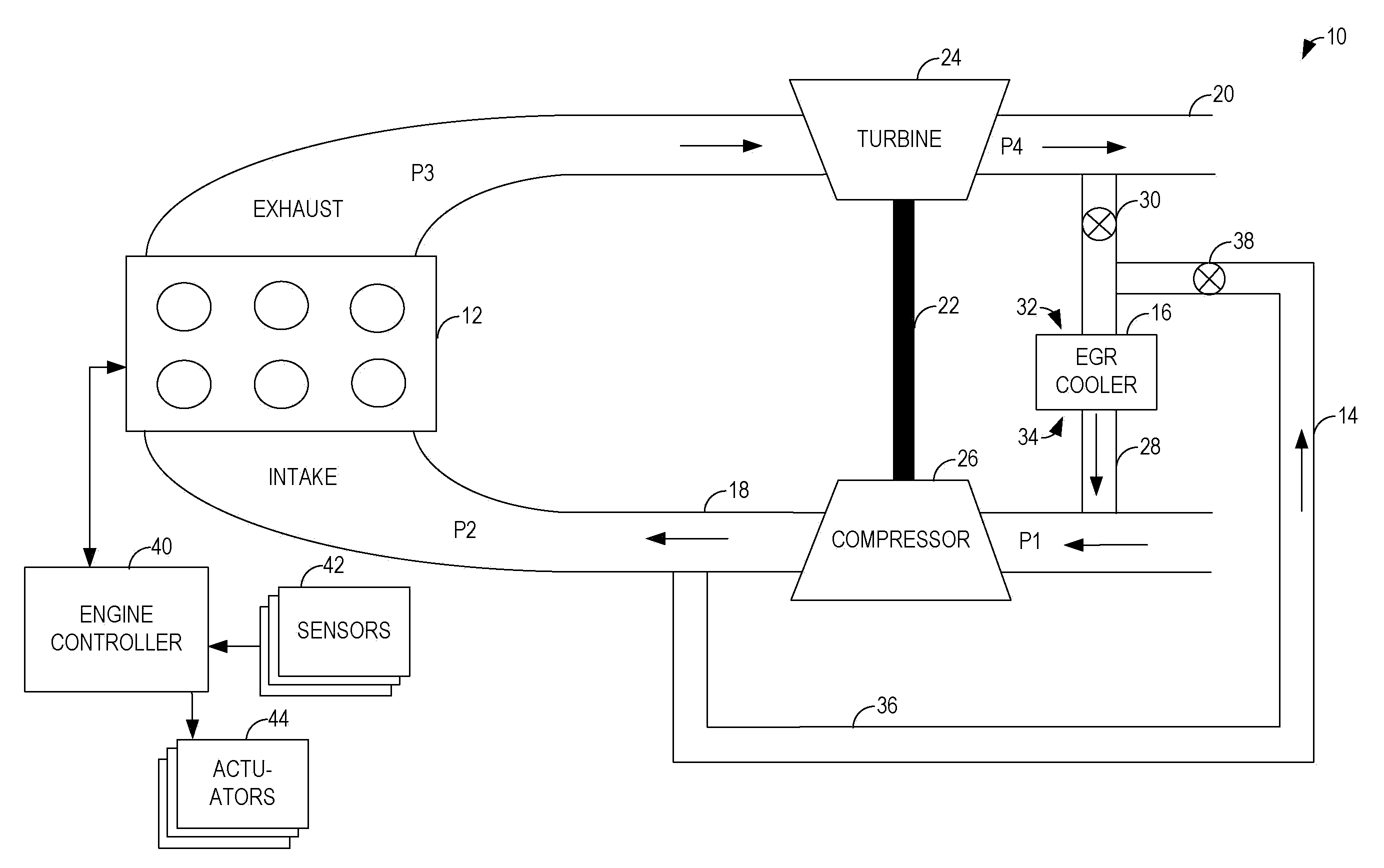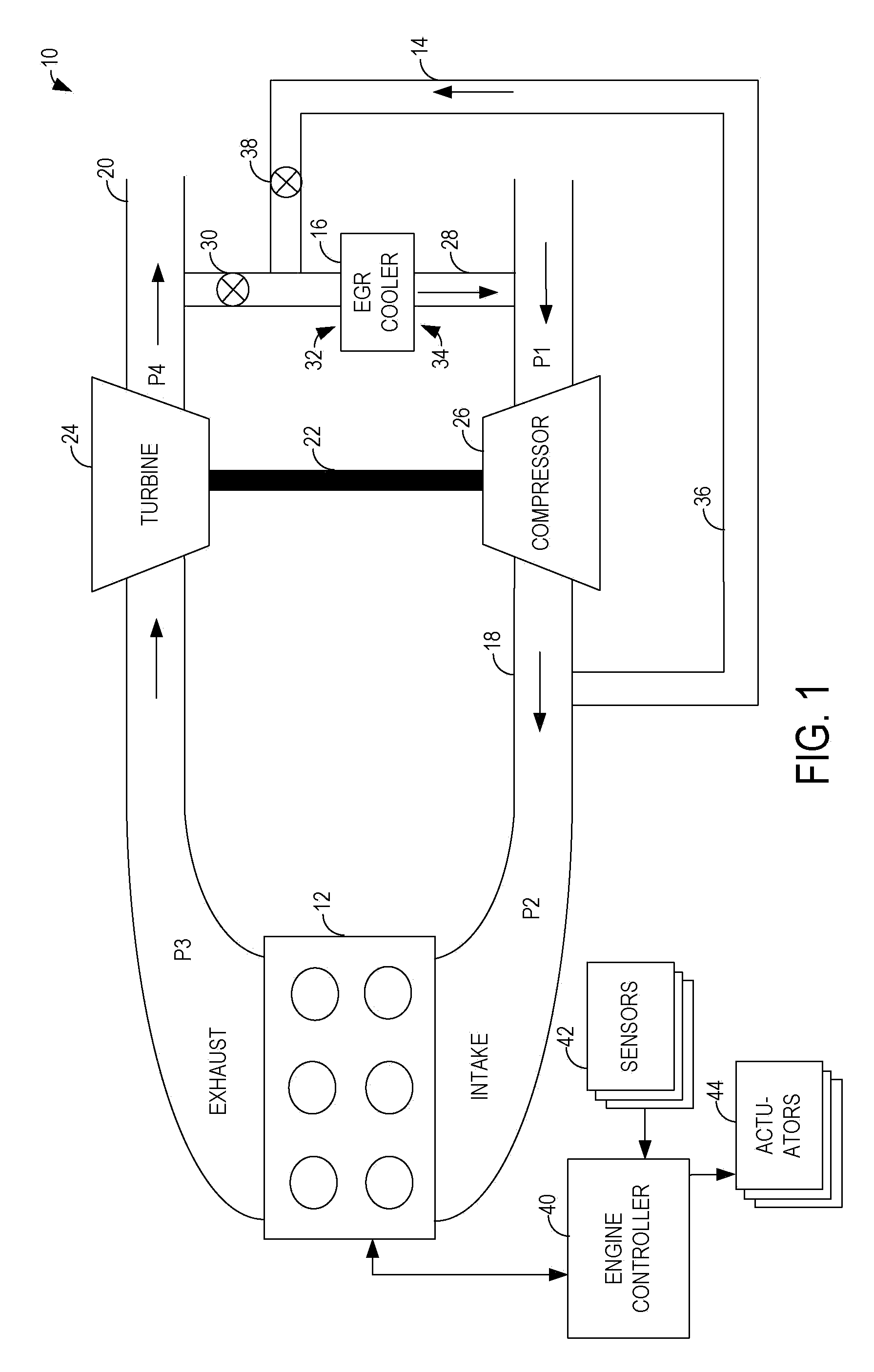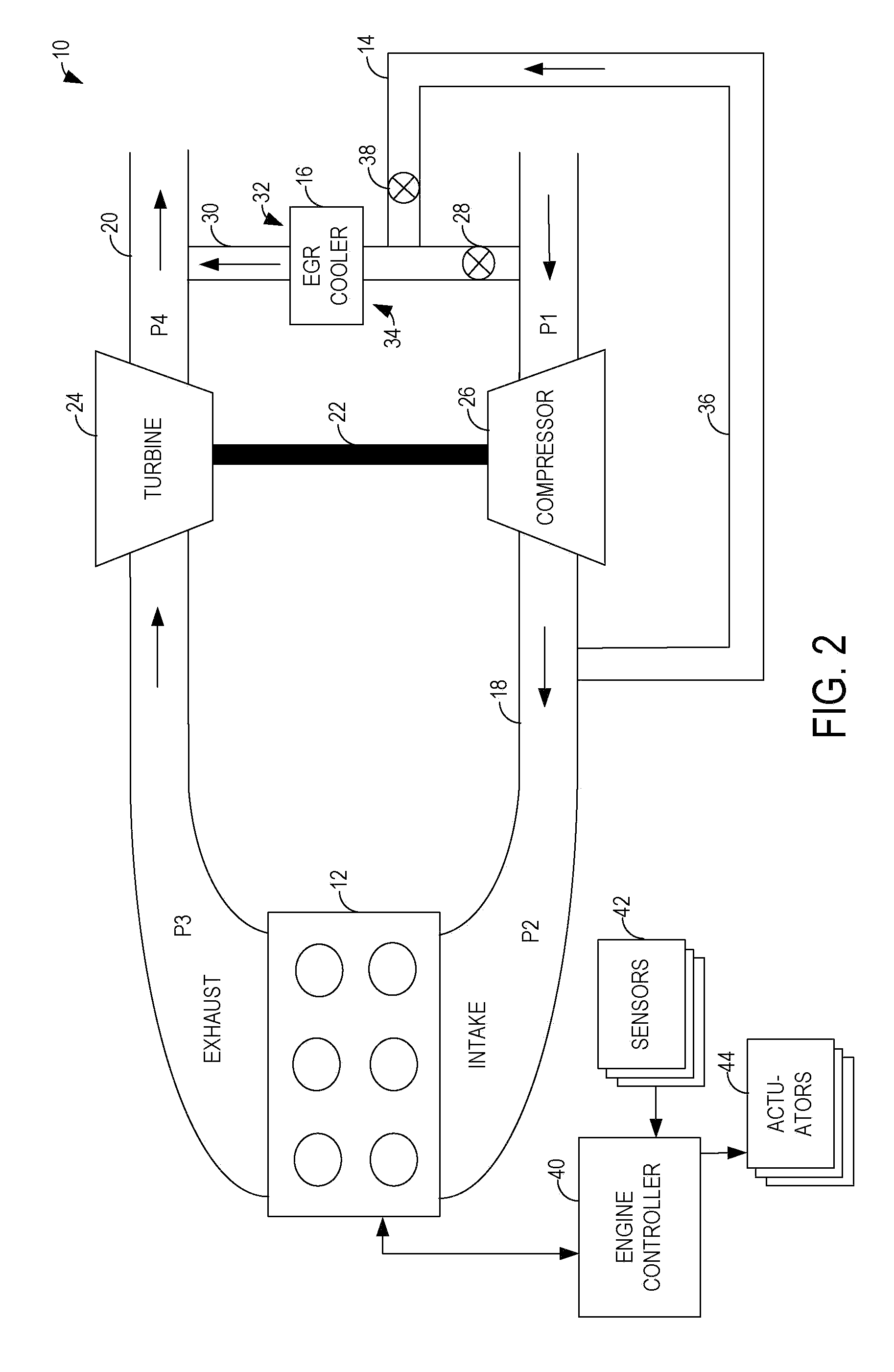Using compressed intake air to clean engine exhaust gas recirculation cooler
a technology of compressed intake air and engine exhaust gas, which is applied in the direction of machines/engines, grain treatment, combustion air/fuel air treatment, etc., can solve the problems of reducing the ability of recirculated exhaust gas to improve emission, reducing the heat transfer ability of egr cooler, and shortening the time period , the effect of improving the emission performance of diesel engines
- Summary
- Abstract
- Description
- Claims
- Application Information
AI Technical Summary
Benefits of technology
Problems solved by technology
Method used
Image
Examples
Embodiment Construction
[0014]FIGS. 1-6 are schematic diagrams illustrating embodiments of an EGR system 10 of an internal combustion engine 12 that utilizes a compressed intake air delivery system 14 to delivery compressed air that is compressed by a turbocharger to remove soot particles deposited in an EGR cooler 16. The EGR system 10 illustrated in FIGS. 1 to 2 are low pressure EGR systems, while the EGR systems 10 illustrated in FIGS. 3 to 6 are high pressure EGR systems. For purpose of simplicity, similar parts are labeled similarly in FIGS. 1 to 6.
[0015]The internal combustion engine 12 may be coupled to an intake passage 18 and an exhaust passage 20. The engine 12 may include a turbocharger 22 having a turbine 24 and a compressor 26, where the turbine 24 may be coupled to the exhaust passage 20 and powered by exhaust gas flowing through the exhaust passage 20, and the compressor 24 may be coupled to the intake passage 18 for compressing intake air flowing through the intake passage 18. It should be ...
PUM
 Login to View More
Login to View More Abstract
Description
Claims
Application Information
 Login to View More
Login to View More - R&D
- Intellectual Property
- Life Sciences
- Materials
- Tech Scout
- Unparalleled Data Quality
- Higher Quality Content
- 60% Fewer Hallucinations
Browse by: Latest US Patents, China's latest patents, Technical Efficacy Thesaurus, Application Domain, Technology Topic, Popular Technical Reports.
© 2025 PatSnap. All rights reserved.Legal|Privacy policy|Modern Slavery Act Transparency Statement|Sitemap|About US| Contact US: help@patsnap.com



